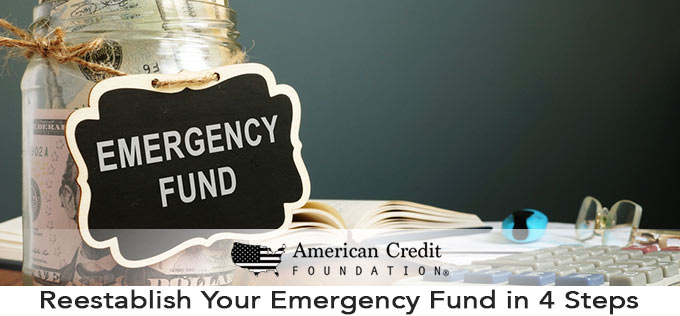
Reestablish your emergency fund in 4 steps. Was it an emergency appendectomy that landed you in the hospital? Or burst water pipes that flooded your basement? Or a fender-bender that resulted in some costly repairs? Whatever the reason, you tapped into your emergency fund to pay the bills. And now your precious safety net is all but depleted.
Don’t fret. This is why you set up that fund in the first place – to handle emergency expenditures without causing mayhem to the rest of your finances.
But now you need to take stock of your emergency fund. As soon as you’re all healed, your home is repaired, or your car can return to the road, it’s time to start replenishing that safety net to make sure that you’ll be covered for next time.
Step One: Congratulate Yourself
No, really, this is one time to applaud yourself for spending. After all, you worked really hard to stash away these backup funds, and it really paid off: You were able to pay off your surprise bills without denting your regular accounts that you rely on for your daily expenses. You created your emergency account to handle just this situation, so don’t stress about having used it up for its express purpose.

Step Two: Strategize
Take this opportunity to consider the emergency fund you just spent. Think about how it felt to have enough money set aside to cover your emergency and what your alternative would have been without having an emergency fund – that can be a great motivation to get going again right away. Also, seriously contemplate whether your fund held enough or whether you should shoot for a loftier goal this time. Remember, the general rule of thumb is to establish enough savings to cover several months’ worth of expenses in case a financial shock hits. But now that you’ve had a telling experience, it’s up to you to determine what amount works for you. Be honest with yourself. Only you can say what amount is enough.
Step Three: Prioritize
Think back to when you first established your emergency fund. You likely built it up over the course of time, setting aside money each month to reach a target. Well, it’s the same now: Establish your savings goal, then use tools available to you – like direct deposit or automatic transfers – to make your deposits into your emergency fund on a regular basis. If you view your emergency fund as the priority it is, you’re more likely to take the steps that will ensure that it will grow. Sure, it might feel like you’re starting over, but this is the perfect chance to improve as needed. So feel free to increase your target amount if you reach your initial goal.
Step Four: Give it a Boost
Look at small ways to boost your savings. Consider those times when you have a little wiggle room – like a tax return, a bonus from work, or some other unexpected payment – and send those straight to the emergency fund before you even miss them. Start a change jar to collect your loose change at the end of the day. Or set up a cash stash and place every five-dollar bill you receive into that. If you’re conscientious about that, you’d be surprised how much those little sums really add up.
Can’t find the motivation to “start over” after your financial emergency? Looking for more expert tips on jumpstarting an emergency savings account? Trying to find the best savings strategy that will work for you over the long term? The team at American Credit Foundation is here to help. Our friendly counselors work with folks on questions just like this, and we’re happy to offer our advice to you.